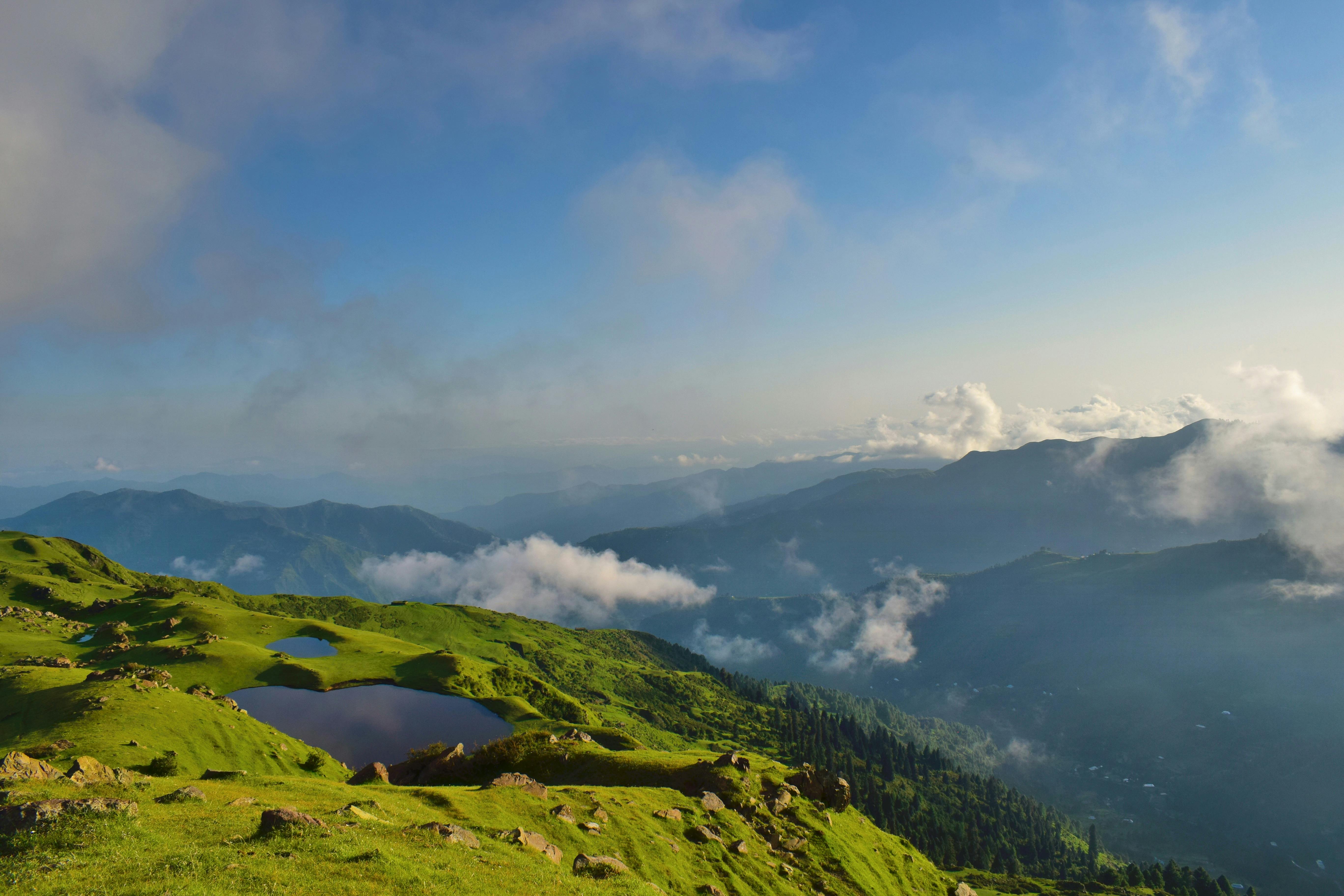Unusually heavy rains had washed out many roads in Viet Nam, including the road in Pa Bat. A crowd drinking beer, tea, coffee and smoking had gathered in a nearby building to watch the action of an idle machine, a combination backhoe and motor grader, carrying out the repair. A mound of dirt lay across the road in what seemed like a full day’s work. We were not far from Muong Luan, our final destination, and it was essential to get there before dark. Night comes quickly in the mountains of northern Vietnam.
He was looking for the ancient Muong Luan tower supposedly built by the early Buddhists on their travels in Asia. Not much is known about the tower, except its location in the dusty little town of wooden buildings in Muong Luan, next to a river that constantly overflows and is turned to glass every month by a full moon that appears bigger. Than any other moon in the world where skinny big-headed chickens and black pigs rummage through the mud.
The road to Muong Luan from Dien Bien Phu is classified as lower quality numbered and paved provincial road, in this case road 130 and without quality. Road construction in Viet Nam is an ongoing endeavor due, in part, to the inexplicable psyche of the Vietnamese. Instead of building a decent road with a thick layer of asphalt that could last ten years or more, they scrape up a fairly even patch of dirt and cover it with a thin layer of asphalt that begins to chip, crack, and puncture at one end. while they are still working on the other end. Within a year, the highway is a mess of rubble, ruts, potholes, caverns, and ruts, a no-man’s-land filled with travel hazards as trucks, buses, and motorcycles spew great clouds of choking dust or grind up dirt. earth until it becomes a sticky paste. to suck mud
That may be the only way to build a road in the interior given the equipment available: a road grader, roller, water buffalo, and human power. Bulldozer spoil has a somewhat level path; the water buffalo drags a log over it to complete the leveling; a 4- to 6-inch layer of stone chips follows; again the water buffalo makes a run; tar is transported in buckets from a waiting truck; workers then gather quarter-inch crushed rock into flat baskets and dump the rocks on top of the tar. The roller flattens everything one more time and the road is finished. Probably a quarter inch layer of tar and stone is all they can handle. The mere thought of piling six inches of stone and tar would scatter all the workers.
The scenery along the way had been spectacular, rolling hillsides covered in quilts of green, buffalo grazing like candy dots on near-vertical slopes, silver rivers winding through gorges, and dusty little towns of drowsy citizens hanging limply from hammocks at night. shadow from the sun Blinds
In Dien Bien Dong we stopped at the local orphanage to deliver food. Only ten children lived in the orphanage, eight boys and two girls. The staff keep the building clean and take good care of the children; all smiling bunches of joy happy to see foreigners. Nev Tickner, an Australian who lives in Dien Bien Phu doing charity work, bought a kitchen for the orphanage and demonstrated to the staff how to fry chicken after mixing it with a batter of eggs and crumbs. As the only Australian in the area, Tickner claims to be a unique and highly valued ethnic minority.
I wandered through the city with my friend Linh looking at the cheap and brightly colored products imported from China. With so little industry in the country, one would think that the Vietnamese would start producing their own products, but in this sense they are like most countries and find it easier to buy cheap products from places like China rather than support their own efforts.
An old man, with a wide smile shining on his face like a beacon, greeted me. Waving doesn’t mean goodbye in Vietnam, it means hello and come over for tea and chat. We shook hands like older brothers when the tea was brought. For a Westerner, the Vietnamese hold their hand for an awkward period of time, often not letting go until after the meeting is over. It is a loving town and it is not uncommon to see men walking hand in hand or hugging. Women are constantly stuck together like ivy. Foreigners, after meeting a Vietnamese woman, often mistake holding hands, hugging and rubbing arms, especially if the arms are covered with hair, as something sexual, but these are just gestures of their sociability and affectionate partnership. in which they live
The man was 82 years old and in very good health. He had been a soldier, just like me, but it was only mentioned once when the man said, “that’s in the past.” He seemed especially happy to see me since foreigners are extremely rare in the isolated area. He invited me to dinner and to stay as his guest in his house for as long as I wanted. There are two types of people in Viet Nam: those who pretend to be extremely nice and friendly and with the highest motivation to clean up their bank account. Then there are the majority of Vietnamese, the average people found all over Vietnam who are genuinely kind and generous and want nothing more than to create goodwill between peoples.
The path to Muong Lun Ancient Tower is long and difficult and took us from Dien Bien Phu through Hong Cum, Huoi Le, Sam Mun, Non Nua, Huoi Mua, Na Son, Dien Bien Dong and now, the last city before our destination, Pa Bat. At Pa Bat our efforts seemed to be in vain and we stared at the washed out road. The mudslide had left a huge crater just before the bridge, and trucks had piled tons of earth to fill the hole. A small backhoe was idle on the opposite side of the land, and even if the tractor had been running, there was no doubt that the hole could be filled without hours of work.
The operator drank beer with the spectators. He saw our frustration and he jumped out of his chair and told us to give him ten minutes and he would clear the way for us. Of course, we kindly thanked him and then laughed a lot among ourselves because of his obviously misguided optimism. The laughter was in us. Like an eager mole, he swung his backhoe from side to side, throwing dirt everywhere in such a display of enthusiasm that we could only stare in disbelief. In less than ten minutes he had dug. I don’t usually give away money freely, but both Nev Tickner and I were so impressed that we gave him $10 for the performance. The reward seemed to take him aback and he would have liked nothing more than to see the smiles on our faces and the warm handshakes we offered him. That $10 turned out to be the best money I spent in Vietnam and ultimately saved us a lot of complaints.
The road to Muong Luan did not improve, but the destination was worth it. Muong Luan is a quaint little town clinging desperately to the steep slopes like spiders on a brick wall. The road through the city is a cacophony of mud and rocks. Some improvements seem to be on the horizon as a roller sat on the far side of the bridge and there seemed to be some anticipation of construction around the tower. The children were using the tower as a giant toy, an artificial mountain to roll on.
I couldn’t find information about the tower from anyone in town and there’s little on the internet besides conflicting theories. A Dien Bien Phu tourist guide, poorly written in the official language of government boredom with bits of narcolepsy, gave all the exciting details shown in most Vietnamese books: absolutely nothing except the dimensions.
Muong Luan is a Lao village and several locals said that the tower was built by ethnic Viet-Lao groups around the 14th or 16th century. (The lack of a date by several hundred years is perfectly acceptable in Vietnam.) Others said that the tower was built in the 12th century. Other people claimed that Buddhist monks built the tower on their way to China. That explanation seems the most plausible since the tower resembles many other Buddhist icons.
The structure is carved with lotuses, flying birds, snakes, dragons, and moss, and mold covers the stone sides in silky green robes. A headless soldier remains at the base. The trees frame the tower and the river and mountains are a good background for photographs.
Unfortunately, few people, except the most die-hard and battle-hardened tourists, will visit the tower due to the impossible road conditions. Too much. The landscape is beautiful.
By the time we reached Pa Bat, a new mound of dirt was blocking our path and the tractor operator had gone home. News of our arrival was sent. In no time at all he was coming down the road with his team, a smile on his face. He again cleared the way. The best part of Vietnam is always the people.



